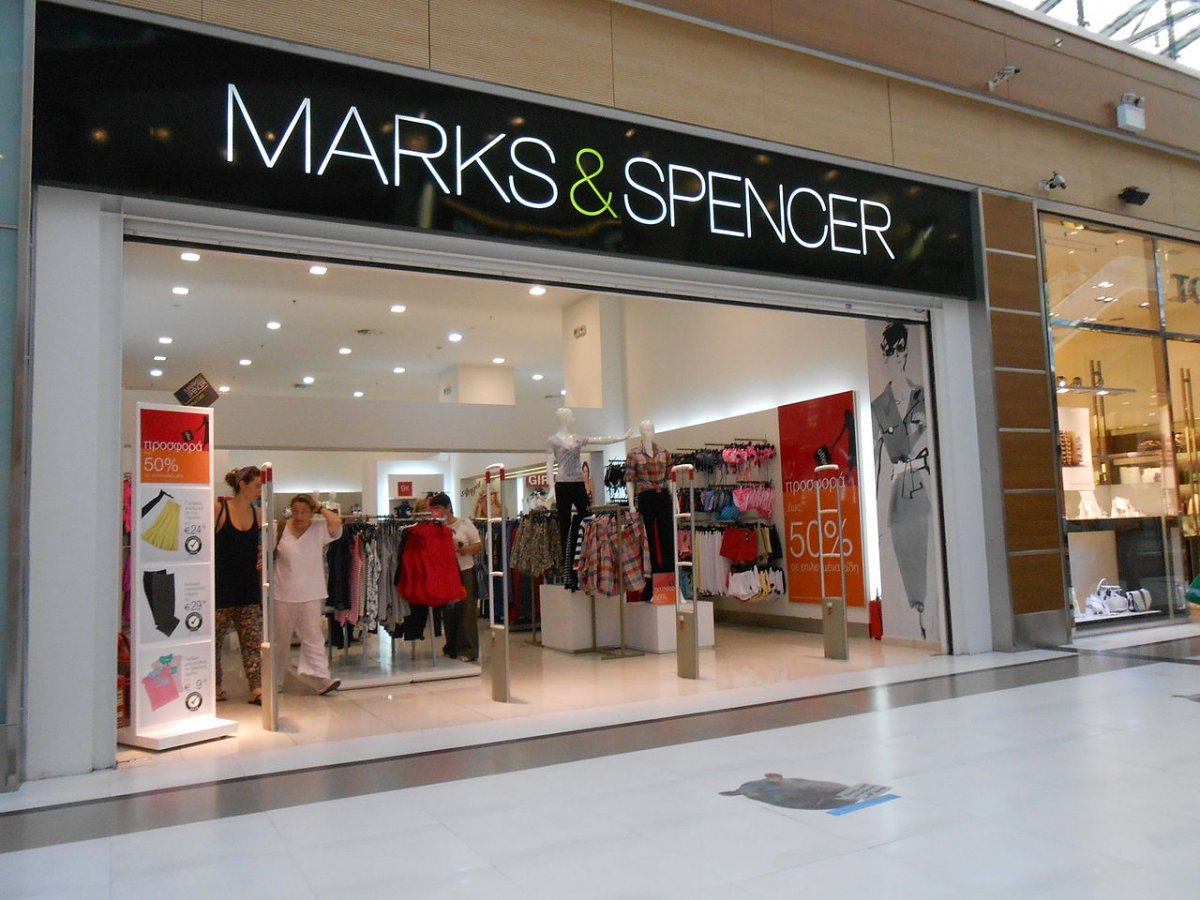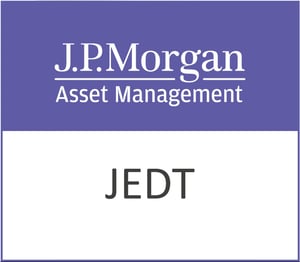Marks and Spencer Group Plc (LON:MKS) has announced its Full Year results for 52 weeks ended 30 March 2024.
Another year of strong financial performance
· Profit before tax and adjusting items of £716.4m (2022/23: £453.3m1).
· Statutory profit before tax of £672.5m (2022/23: £475.7m).
· Food sales up 13.0%; adjusted operating profit £395.3m (2022/23: £248.0m) and margin of 4.8%.
· Clothing & Home sales up 5.3%; adjusted operating profit £402.8m (2022/23: £323.8m) and margin of 10.3%.
· Ocado Retail JV; share of adjusted loss £37.3m (2022/23: £29.5m).
· International (exc. ROI) constant currency sales down 1%, adjusted operating profit £47.7m (2022/23: £67.9m).
· Adjusted return on capital employed 14.1% (2022/23: 10.6%).
The Beginnings of a New M&S
· Food delivers market-leading volume growth and strong innovation whilst broadening customer appeal.
· C&H delivers market-leading share growth. Trading model delivering style, value, quality, and lower markdown.
· Strong returns from store rotation and renewal. Increased renewal this year and pipeline of new stores developing.
· M&S.com accelerating growth, attracting new customers, and increasing profitability.
· Gist acquisition generating quick pay back, creating foundations for Food distribution network development.
· Structural cost savings of £180m in 2023/24, with 5-year objective increasing to £500m from £400m.
· Increased free cash flow of £414m driving further balance sheet improvement and net funds position at year end.
· Capacity to accelerate high returning investment and to restore a full year dividend of 3 pence per share.
| Group Results (52 weeks ended) | 30 March 24 | 1 April 23 | Change (%) |
| Statutory revenue | £13,040.1m | £11,931.3m | 9.3 |
| Sales2 | £13,109.3m | £11,988.0m | 9.4 |
| Operating profit before adjusting items | £838.6m | £626.6m | 33.8 |
| Profit before tax and adjusting items1 | £716.4m | £453.3m | 58.0 |
| Adjusting items1 | (£43.9m) | £22.4m | n/a |
| Profit before tax | £672.5m | £475.7m | 41.4 |
| Profit after tax | £425.2m | £364.5m | 16.7 |
| Basic earnings per share | 21.9p | 18.5p | 18.4 |
| Adjusted basic earnings per share1 | 24.6p | 16.9p | 45.6 |
| Adjusted return on capital employed1 | 14.1% | 10.6% | 33.0 |
| Free cash flow from operations | £413.7m | £170.4m | n/a |
| Net (debt) | (£2.17bn) | (£2.64bn) | n/a |
| Net funds/(debt) excl. lease liabilities | £45.7m | (£355.6m) | n/a |
1. Adjusted measures for 1 April 2023 have been restated as a result of net pension finance income being reclassified as an adjusting item (2023/24 £24.0m, 2022/23 £28.7m).
2. References to ‘sales’ throughout this announcement are statutory revenue plus the gross value of consignment sales ex. VAT.
Non-GAAP measures and alternative profit measures (APMs) are discussed within this release. A glossary and reconciliation to statutory measures is provided at the end. Adjusted results are consistent with how business performance is measured internally and presented to aid comparability. Refer to Notes 1 and 3 of the financial information for further details.
Stuart Machin, Chief Executive said:
“Two years into our plan to Reshape for Growth we can see the beginnings of a new M&S. Food and Clothing & Home grew volume and value share ahead of the market and sales increased across stores and online. Both businesses have now delivered 12 consecutive quarters of sales growth and this trading momentum gives us wind in our sails, and confidence that our plan is working. We are becoming more relevant, to more people, more of the time.
We remained unswerving in our commitment to trusted value, offering customers exceptional quality at the very best price. Food’s leading quality perception increased even further with over 1,000 products upgraded and 1,300 new lines launched. Continued progress was made on value perception with £60m invested in price. In Clothing & Home, style perception continued to improve and our decisive lead on quality and value perception was extended. Our commitment to ‘First Price Right Price’ supported full price sell through ahead of last year.
Investment in store rotation and the end-to-end supply chain is beginning to pay off. New stores and renewals are performing ahead of forecast and attracting new customers. Supply chain modernisation supported margin growth across both businesses. In Clothing & Home, stock flow improved enabling historically low levels of stock cover, and in Food, Gist is delivering payback ahead of expectations.
Disciplined capital allocation underpins our plan, and the financial health of the business is as strong as it’s been in decades. Free cash flow has increased, financial net debt has been eliminated, and returns on investment have improved. The strength of the balance sheet, coupled with the sustained improvement in performance, means we have the headroom and confidence to invest for future growth as well as introduce a 3p dividend.
It has been a good year, and I would like to thank all of our colleagues for their hard work and commitment. However, there remains much work to do and that’s a good thing as every challenge is an opportunity for growth. The soft wiring of the organisation – who we are and how we show up – is changing and we are building a culture where everyone is sleeves rolled up, M&S first, closer to customers and closer to colleagues. But culture change is a job that is never ‘done’ and it is critically important to reshaping M&S.
We have made progress on ‘hardwiring’ sustainable change – how and when we execute our strategic priorities – with progress in store rotation and supply chain. However, we need to move faster and be ruthlessly challenging on the areas where progress has been slower, building a more effective digital and technology infrastructure, accelerating the move to a truly personalised customer experience, and resetting priorities in International.
We have a clear plan, a clear vision for the future, and there is so much opportunity ahead of us. We are at the beginnings of a new M&S.”
________
RESHAPING FOR GROWTH
Over the past two years, the strategy of reshaping M&S has delivered growth in sales, market share, margins, return on capital and free cash flow. The programme is in its early stages with substantial scope for further operational efficiency and sustainable growth and we are laser-focused on the continued execution of the plan which we set out at the Capital Markets Day in 2022.
Creating exceptional products
Our vision is to be the UK’s most trusted retailer, with exceptional quality products at the heart of everything we do. The M&S Food model is focused on a tightly edited range and concentrated supply base, consistently innovating and improving products, whilst investing in trusted value. As we evolve the range and open larger renewal format stores, customer appeal is broadening to family shoppers. Clothing & Home’s transition to a new trading model includes buying more deeply into core lines, translating fashion trends into greater newness and concentrating supply with strategic partners and a faster supply chain. This is resulting in improved perceptions in style, quality and value, and reduced promotion and markdown. Market share increased to 10.0% (from 9.6%) in Clothing and 3.7% (from 3.55%) in Food in the 52 weeks ending March 2024. There are substantial opportunities for growth to achieve our ambition of a 1% market share increase in both businesses between FY23 and FY28.
Reshaping the channels of growth
A more productive store estate is critical to long term growth as performance is constrained by legacy stores that are more expensive to operate and do not demonstrate the M&S brand of today. Rotation towards a target estate of 180 full line and 420 Food stores provides significant opportunity to invest and grow in the years ahead. New and renewed stores are attracting new customers and returns on investment have been strong. Investment is planned to increase as attractive new sites are secured, and as renewal performance continues to be robust.
Our long-term objective for M&S.com’s share of Clothing & Home sales is to grow towards 50%, having increased from 22% five years ago. Online growth has increased, supported by better product and more effective marketing. Despite this, profitability is not yet market leading despite our scale advantage. There is much more to do to develop the online and M&S App experience and customer engagement, whilst growing partner brands. All of this will help retain customers within our M&S eco-system.
As a reminder, results for Ocado Retail are reported by Ocado Group, and are not consolidated in this release. We believe the Ocado Retail model of automated fulfilment powered by Ocado technology, and M&S product, could be the most competitive model for online grocery sales in the UK. M&S Food has worked closely with Ocado Retail to reset the business and we are now seeing encouraging active customer and sales growth, although profitability is well below the original business plan and expectations. There is enormous opportunity to improve trust in value, website experience, logistics, and supply chain, which will be the focus for the next two to three years.
The transformation in our International business has not made as much progress as our UK businesses, so it is now undergoing a reset. Over time, we plan to leverage our UK business and trusted brand to increase global reach through capital light partnerships and a multi-platform online business.
Increasing efficiency of operations
In Food, the integration of the Gist acquisition has generated strong returns and provides the foundation for a ten-year programme to invest in, and modernise, the supply chain.
The Clothing & Home supply chain is now more focused with fewer, more strategic suppliers having also rationalised the number of distribution centres in the UK. There is lots to do to reduce costs, improve stock flow and drive availability with plans underway to modernise our merchandise and range management technology.
With the evolution towards an omni-channel and personalised customer experience, a more effective digital and technology infrastructure is a critical enabling step and progress to date has been slower than planned. With new leadership soon to be in place, we expect to accelerate change and increase investment in core technology infrastructure, including an upgrade in SAP starting this year.
Overall, these operational improvements mean there is substantial further scope for structural cost reduction. With continuing cost headwinds, notably from investment in colleague pay, the structural cost programme is critical to our profit progression. The £180m delivered to date has supported a 0.8% pt. reduction in UK operating costs as a percent of sales. We are increasing the objective for cost reduction from £400m to £500m, to be delivered by 2027/28. This will support continued delivery of our target operating margins of over 4% in Food and over 10% in Clothing & Home, as well as further investment in quality and value.
Generating cash for investment and shareholder returns
Our financial goals prioritise operating cash flow generation and a strong balance sheet to provide the capacity for investment in growth and structural cost reduction. Free cash flow has increased and we have net funds excluding lease liabilities at the year end. The returns we are delivering on recent investments have been in excess of our cost of capital and the minimum hurdle rates set out at the last Capital Markets Day. The business now has the capacity to increase capital allocated to the rotation and renewal of stores, to invest in the Food and Clothing & Home supply chains and in improved digital and online capability.
The stronger financial position and performance also provides the opportunity to restore dividend payments at a sustainable level, with a proposed final dividend of 2p, resulting in a full year dividend of 3p for 2023/24.
________
OUTLOOK
Through the Reshaping M&S strategy, our focus continues to be on driving volume growth in Food and Clothing & Home to deliver the market share and margin objectives we set out at the Capital Markets Day.
This year we have made a further significant investment in colleague pay. This will be funded by structural cost reductions and other efficiencies. Other cost inflation will largely be offset by reduced energy costs.
Given our track record of delivering volume growth, market share and free cash flow we are confident that we will make further progress in 2024/25 and beyond.
________
FOOD INVESTING IN INNOVATION AND VALUE, ATTRACTING FAMILY SHOPPERS
M&S Food is gaining new customers and broadening its appeal. Our objective is to grow volume and market share by investing in value, quality, and innovation, growing through new space, store rotation and renewal, and investing in the supply chain to improve availability and efficiency.
Long term changes, improving the growth potential of Food include:
· Investing in trusted value, with promotions reducing to 12% sales versus 26% in 2017/18.
· Upgrading and innovating one third of the range each year, driving volume lines and development in health.
· Developing bigger, ‘fresh market’ style stores in the renewal format, offering a broader range and improved customer experience, increasingly catering to family shoppers.
· Increasing the share of larger baskets by a quarter since 2019/20.
Market leading volume growth in 2023/24
In 2023/24, Food sales grew 13.0% with LFL sales up 11.3%. As a result of sales and volume growth, the benefits of sourcing and structural cost reduction and the acquisition of Gist, adjusted operating profit increased to £395.3m (4.8% margin) from £248.0m (3.4% margin) last year.
· Prices were lowered on more of our ‘Remarksable Value’ products, with over half of the range in M&S’s healthier ‘eat well range’. Remarksable sales grew 34%. We also ‘Dropped and Locked’ prices on a further 90 lines, building customer trust in M&S value for money in an increasingly promotional market.
· 1,300 new lines were launched, including category resets in basket building products such as biscuits and hot beverages, and product development in high protein and gut health. We also upgraded the quality of more than 1,000 customer favourites.
· With the price of eating out increasing, the ‘Dine-In’ offer, which provides an ‘always on’ restaurant quality alternative, saw sales growth of over 40%.
· Market share of M&S sales in stores increased to 3.7% (from 3.6% in 2022/23) driven by growth in volume, larger baskets and across all demographics. Once M&S on Ocado is included, market share increases to 4.2% (from 4.0% in 2022/23).
· Customer perceptions of value, quality and sustainability all improved.
In 2024/25, further value investment is planned, with a focus on driving volume growth further, together with renewing and developing key product ranges such as the recent ‘Cook’ menu, ‘Dine-In’ launch and further investment in quality.
Store renewal and expansion continues to plan
Six new Foodhalls were opened as part of full line store rotations, and we opened eight standalone Food stores. New Simply Food stores averaged c.13,000 sq. ft. compared with a current average of c.8,000 sq. ft., enabling the ranging of a fuller catalogue and illustrating the growth opportunity for the business.
· 8 Food stores were also renewed, bringing the total to 104, with renewal store sales performing ahead of plan.
· Renewals that opened in 2022/23 saw sales increase by a further 14% in 2023/24, with healthy customer metrics for frequency and basket size.
· The ten ‘full’ Food renewals opened since 2019 with annualised trading are expected to pay back the capital invested in four years.
· This year, we expect to open 9 new Food locations and to accelerate investment in renewal, completing around 25 schemes, strengthening the pipeline of openings.
Good progress on the Food ‘backbone’ programme
The Food supply chain programme is driving a series of changes to create a more modern cost competitive flow of product from field or factory through to checkout. This will drive availability and reduce waste and costs to distribute whilst creating a more sustainable operation.
· Long term supplier commitments and joint efficiency plans delivered cost of goods savings enabling investment in value and quality, with further progress planned this year.
· The Gist acquisition has delivered logistics savings which were greater than expected and a rapid pay back on invested capital, largely through integrated management. Despite this, the network is old and a high cost to serve. This year will see the first steps in new capacity investment as we develop the longer term network plan.
· The roll out of a new forecasting and ordering system reached c.50% of lines with availability increasing without increasing waste, although there is substantial scope for improvement. In 2024/25 we expect to complete roll out to all categories. Alongside this, we are working on a more consistent approach to space and range changes.
· A new retail operations programme ‘One Best Way’ was trialled in the year, succeeding the former ‘Operation Vangarde’, and started to deliver further availability and productivity benefits.
· Over 100m pieces of plastic packaging have been removed including through the introduction of first-to-market fully recyclable takeaway cups. £1m is being invested to reduce carbon emissions in the creation of our RSPCA assured milk.
M&S Food is a unique model driven by its focussed own label range, integrated relationships with core suppliers, continuous focus on quality and innovation and its commitment to provide better quality and sustainability at great value for money. Our confidence in growth is underpinned by the fact that market share is substantially higher than average in some parts of the UK, showing the potential.
CLOTHING & HOME GROWTH REFLECTING THE TRANSITION TO A NEW TRADING MODEL
The improved performance of Clothing & Home is driven by better product, style and quality at everyday great value. This is appealing to a broader customer base, showing the growth potential from improving the product and online shopping experience, and the store environment through renewal.
Long term changes, improving the growth potential of Clothing & Home include:
· Reducing the long tail of option count, with double digit percentage reduction in womenswear since 2019/20.
· Buying bolder and deeper, growing lines with over £1m of sales by c.50% over the last two years.
· A shift to everyday trusted value, with full price sales mix increasing from 63% to 81% since 2019/20.
· Improving stock flow with stock cover now less than 12 weeks, compared with 18 weeks in 2018/19.
· Increased focus on availability, with more controls on stock flow into the UK and on to stores based on demand.
Delivering sales and market share growth across categories
In 2023/24, overall Clothing & Home sales grew 5.3% with LFL sales up 5.2%. As a result of improved gross margin supported by full price sales growth and the benefits of the structural cost reduction programme, adjusted operating profit increased to £402.8m (10.3% margin) from £323.8m (8.7% margin) last year. Sales in heartland categories of women’s and menswear outperformed, due to improved product style, quality, and value. Particular highlights were:
· Robust performance in core product in categories such as denim/casual bottoms, knitwear, and bras.
· Quality improvement translating into top tier sales growth with men’s Autograph sales up over 50%.
· Growth in holiday sales of c15%, reflecting a return to travel and events.
· Clothing market share increased to 10.0% (from 9.6%), and full price share increased to 12.4% (from 11.6%).
· Customer perceptions of style, quality and value all improved further year on year.
We remain laser-focused on the growth opportunities across women’s, men’s, kids, and core Home. As part of this, we are simplifying the bulky ‘two-person’ delivered furniture operation. This will impact annual online sales by c.£80m but will release space and resources to expand the growing core Home business.
Store rotation generating strong returns
Store sales increased 4.1%, with a good performance in shopping centre and retail park stores. We opened six full line stores, which sell both Clothing & Home and Food and closed twelve, of which five were relocations. All replacement stores substantially outperformed the closed stores and exceeded forecast returns:
· Full line openings included the relocation to five former Debenhams stores in Leeds, Manchester, Liverpool, Birmingham and Thurrock and a new store in Purley Way.
· Performance of the relocations to date has been very strong, with the stores attracting new customers and delivering sales growth of c.50% from similar space, as we move to the renewal format in better locations.
· New stores typically require substantially less energy to operate relative to sales and generate a lower carbon footprint, supporting reduction in Scope 1 and 2 emissions.
· Since 2019, £100m of capital has been invested to open twelve full line stores, with expected pay back of c.2 years.
· In 2024/25 we anticipate opening up to four new full line stores and are implementing a refreshed renewal format, while progressing asset disposals.
· We continue to seek new sites, to enable us to accelerate store closures and create an estate we are proud of by 2027/28.
Online growth accelerating
Online sales increased 7.8%. Growth accelerated in the second half, as the effectiveness of online marketing started to improve, particularly in womenswear.
· Overall participation in C&H sales increased to 32%.
· The M&S App continued to grow, accounting for 44% of online orders (2022/23: 37%).
· Partner brand sales grew 33%, with new partners added including Adidas, Puma, and Sweaty Betty, supporting the growth of average basket value.
· The removal of unprofitable lines, logistics efficiencies and reduced failed deliveries enabled sales growth to convert to an increased online operating margin of 8.2% (2022/23: 5.0%).
There is substantial opportunity to improve the online and M&S App experience, make further improvements to fulfilment, and invest in systems changes to support delivery of the brands strategy.
Progress on phase one of the supply chain ‘end to end’ programme.
Our ambition is to move from a slow-moving operation with a broad supply base and DCs which store stock, to a group of strategic suppliers with a rationalised network of automated DCs, where full visibility enables us to flow stock more directly to the customer.
· We have begun to consolidate knitwear, denim, and lingerie across fewer suppliers. The number of fabric mills has also reduced as volumes are combined.
· In UK logistics, volumes were consolidated into nine core sites. Investment in omni-channel capability and the increased use of hub stores for returns consolidation delivered cost savings. This year, further investment will be made in boxed storage and hanging goods automation, creating capacity for growth.
· Investment into a new planning, merchandising and range management platform starts this year, to deliver efficiencies in the planning process, in sourcing, and in stock flow.
· Progress on Plan A was made with the use of recycled polyester increasing to c70%, and 100% of cotton is now responsibly sourced in clothing.
We are at the beginnings of a new Clothing, Home and Beauty business, with a better product and trading model and an improving customer proposition, which is resonating with a broader customer base. There is substantial opportunity and restructuring plans are underway across the product offer, store estate, online experience, and supply chain which offer the potential for sustained growth.
INTERNATIONAL RESET TO ADDRESS SLOW GROWTH
The International business’ objective is to drive growth by leveraging the UK business and M&S brand through capital light franchise partnerships and a multi-platform online business with global reach. In more recent years, the business has not delivered consistent growth. This year, priorities for International have been reset under new leadership to provide stronger foundations for long term growth. We remain committed to the opportunity to expand global reach as outlined at the Capital Markets Day in 2022.
Slow growth in partnership markets
International (excluding Republic of Ireland) sales declined 1.0% at constant currency to £719.1m. As a result of weaker sales growth in the second half and action to reduce stock levels, adjusted operating profit declined to £47.7m (6.6% margin) from £67.9m (9.1% margin) last year.
· Retail sales growth was weaker in the second half, declining 3.6% in constant currency against tough comparatives and a softer market backdrop. Action was taken in India to clear overstocks and reduce inventory holdings.
· Online sales were £118.6m in 2023/24, down 10.2% as promotional activity was reduced and changes were made to the delivery proposition to improve profitability.
· Operational investments are focused on reducing delivery times and cost to serve, for instance through a new e-commerce distribution centre in Poland for direct shipment of online orders to the EU from Q4 2024/25.
The business has strong franchise and JV partnerships in high growth markets. The longer term opportunity is to work with partners to deliver the best of M&S on a global scale, with more choice and more timely flow of new products.
Improved profitability in the Republic of Ireland
Sales in the Republic of Ireland were encouraging, growing by 2.4% at constant currency to £320.7m.
· Operating profit before adjusting items improved to £27.9m from £16.9m last year.
· Lower supply chain costs in the Food business drove much of the improvement.
· Food has made progress on local sourcing and has successfully expanded its presence through franchising with Applegreen, which now operates 10 stores.
From the 2024/25 financial year, the results of the Republic of Ireland will be reported as part of a new UK and Republic of Ireland segment within both Food and Clothing & Home.
OCADO RETAIL STARTING TO DELIVER IMPROVED REVENUE GROWTH
Results for Ocado Retail are reported by Ocado Group and are not consolidated in this release. M&S accounts for the joint venture as an associate interest.
Our vision for Ocado Retail remains to combine the magic of M&S Food with Ocado’s unique and proprietary technology to offer unbeatable choice, compelling service, and reassuringly good value, underpinned by efficient and effective operations.
Ocado Retail is in the early stages of driving growth
Revenue increased 11.2% to £2.47bn and adjusted EBITDA was £26.8m (2022/23: loss £15.1m). While adjusted EBITDA improved, M&S group’s share of adjusted loss increased to £37.3m (2022/23: £29.5m) due to higher interest costs on shareholder loan funding and a write off of a deferred tax asset in the current year.
The rate of revenue growth accelerated during the year, driven by increased choice of M&S products, and improved value for money and service as part of the Ocado Retail ‘Perfect Execution’ programme. This has been reflected in a sharp improvement in net promoter scores. Despite this, profitability is well below original expectations and there is considerable scope to leverage our combined capabilities in sourcing and marketing, and to develop Ocado’s delivery service and online experience.
Increased choice, availability, and value
· 4,800 M&S Food products were available on Ocado.com by year end, a 20% increase on last year. Availability has improved considerably, although there is further opportunity on the most important lines and at key event periods.
· Ocado’s price inflation was less than the market, driven by improved value for money on M&S products as well as reductions under the Big Price Drop campaign. As a result of greater choice and improved value, sales of M&S products grew 15% in Q4 and represented 30% of basket items.
Developing more effective and efficient operations
· The new Luton CFC opened in September 2023 and delivered a rapid ramp up in operations as business transferred from less productive capacity at Hatfield, with the new site also providing a test bed for on-grid robotic picking. With capacity fees for Hatfield continuing to be charged by Ocado Group, we do not currently expect Ocado Retail to reap the full financial benefit of transferring to the new site.
· Ocado Retail still operates on legacy technology for its website, last mile delivery and supply chain systems. It will be migrating to Ocado Technology’s much delayed ‘OSP’ solution over the course of the next 18 months, which is anticipated to offer customers increased convenience and greater personalisation, as well as long term operational efficiencies for the business.
Although the financial performance of Ocado Retail remains disappointing, the revenue improvement this year under the new management team has been marked. And in a world where several operators have exited the online food delivery market, the potential competitive advantages of the M&S / Ocado combination are increasingly evident.
STRONG BALANCE SHEET AND RETURN ON CAPITAL IMPROVEMENT, GIVING SCOPE FOR INCREASED INVESTMENT
M&S ended the year in the strongest financial health since 1997, with net funds of £45.7m excluding lease liabilities (2022/23: net debt £355.6m). A focus on operational cash flow generation combined with a disciplined approach to capital allocation has driven improved return on capital employed and substantial deleveraging. We therefore have the scope to increase investment, while restoring dividends to shareholders.
· In 2023/24 M&S generated free cash flow of £413.7m, compared with £170.4m last year, as a result of increased profits and supported by working capital inflows due to the timing of payments over year-end, including the effects of Easter.
· As a result of a stronger balance sheet, and the repayment of £405m of medium-term bonds, our credit metrics strengthened further, with S&P Global Ratings upgrading M&S to ‘Investment Grade’ in November 2023.
· Store rotation and renewal plus the acquisition of Gist generated pay back ahead of expectations, our cost of capital, and the minimum hurdle rates set out at the last Capital Markets Day. This provides the foundations to increase investment in 2024/25 when we plan for capital expenditure net of disposals to increase to c.£500m.
· Given the improved cash generation and balance sheet and allowing for the considerable opportunities to invest in the reshaping of M&S for growth, we are proposing a total dividend for the full year of 3 pence per share.
CREATING A HIGH-PERFORMANCE CULTURE
Creating a high-performance culture is critical to reshaping M&S for growth. Much progress has been made, with lots of opportunity ahead of us:
· In 2023/24 a clear vision, purpose and a set of behaviours that are valued at M&S were established. At the heart of this is a culture of ‘always aiming higher’ and one where we are closer to customers and closer to colleagues.
· The biggest ever investment in front line colleague pay of £89m was made this year. From 1 April 2024, the rate of pay for c.40,000 UK Customer Assistants increased from £10.90 to £12.00 per hour, a 26% increase since March 2022, alongside the introduction of additional benefits.
· New monthly pulse surveys have been launched for colleagues to feedback on the part they play in delivering change.
· Every support centre colleague is now required to spend seven days each year working in store as part of their performance objectives. Delivering change requires challenge, learning and creativity and we firmly believe that this happens best when colleagues are together. Most colleagues therefore work in the support centre at least three days a week, with one day in stores or with suppliers.
· Leadership is expected to be sleeves rolled up and, in the detail, and we have continued to attract and promote talent. Some examples of this include Rachel Higham who joins soon as Chief Digital & Technology Officer in June, and Mark Lemming who has recently been promoted from running the Clothing & Home supply chain to International Managing Director.
Investor & Analyst presentation and Q&A:
A pre-recorded investor and analyst presentation will be available on the Marks and Spencer Group Plc website here from 7:30am on 22 May 2024.
Stuart Machin and Jeremy Townsend will host a Q&A session at 9.30am on 22 May 2024:
For the quickest joining experience, please register prior to attending the call here. After registering, you will be given unique dial in details to join the call.
Alternatively, you can use the below details to join the call but please join 5-10 minutes before the start time in order to register your details with the operator.
Dial in: +44 (0) 33 0551 0200
Passcode: Quote M&S Analyst Call when prompted by the operator
Replay: A recording will be available for 48 hours after the call here
Fixed Income Investor Conference Call
Jeremy Townsend will host a fixed income conference call at 2pm on 22 May 2024:
For the quickest joining experience, please register prior to attending the call here. After registering, you will be given unique dial in details to join the call.
Alternatively, you can use the below details to join the call but please join 5-10 minutes before the start time in order to register your details with the operator.
Dial in: +44 (0) 33 0551 0200
Passcode: Quote M&S Investor Call when prompted by the operator
Replay: A recording will be available for 48 hours after the call here






































